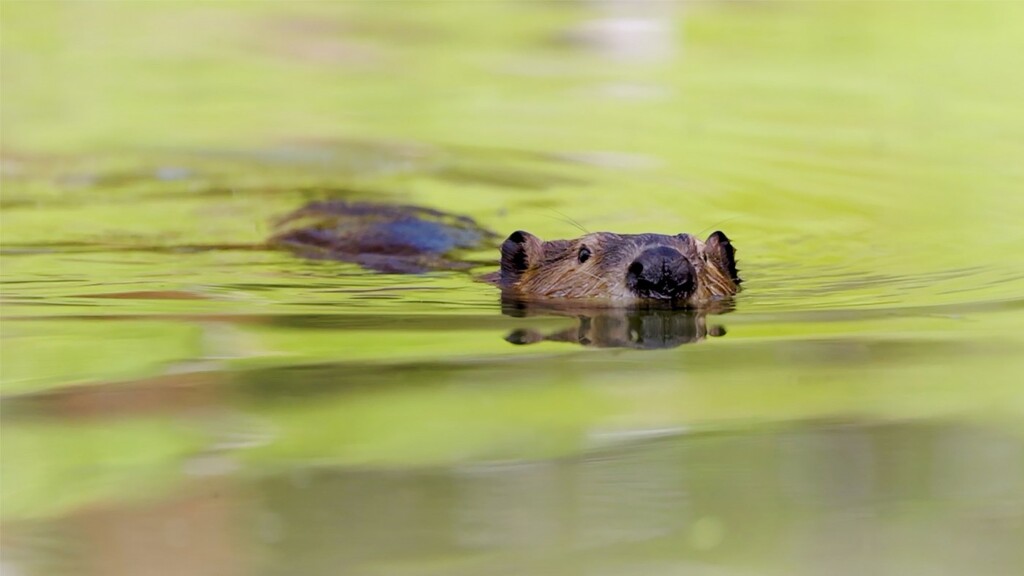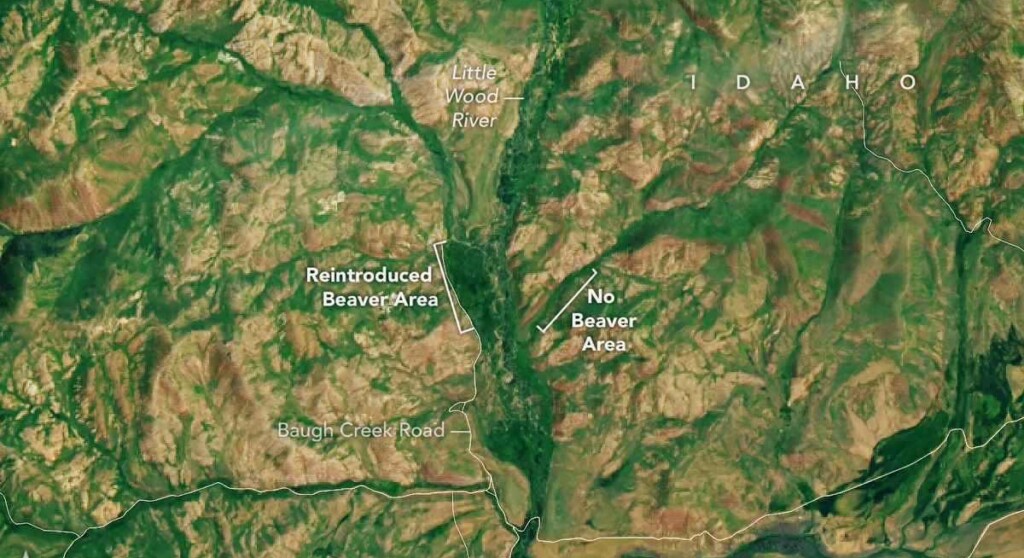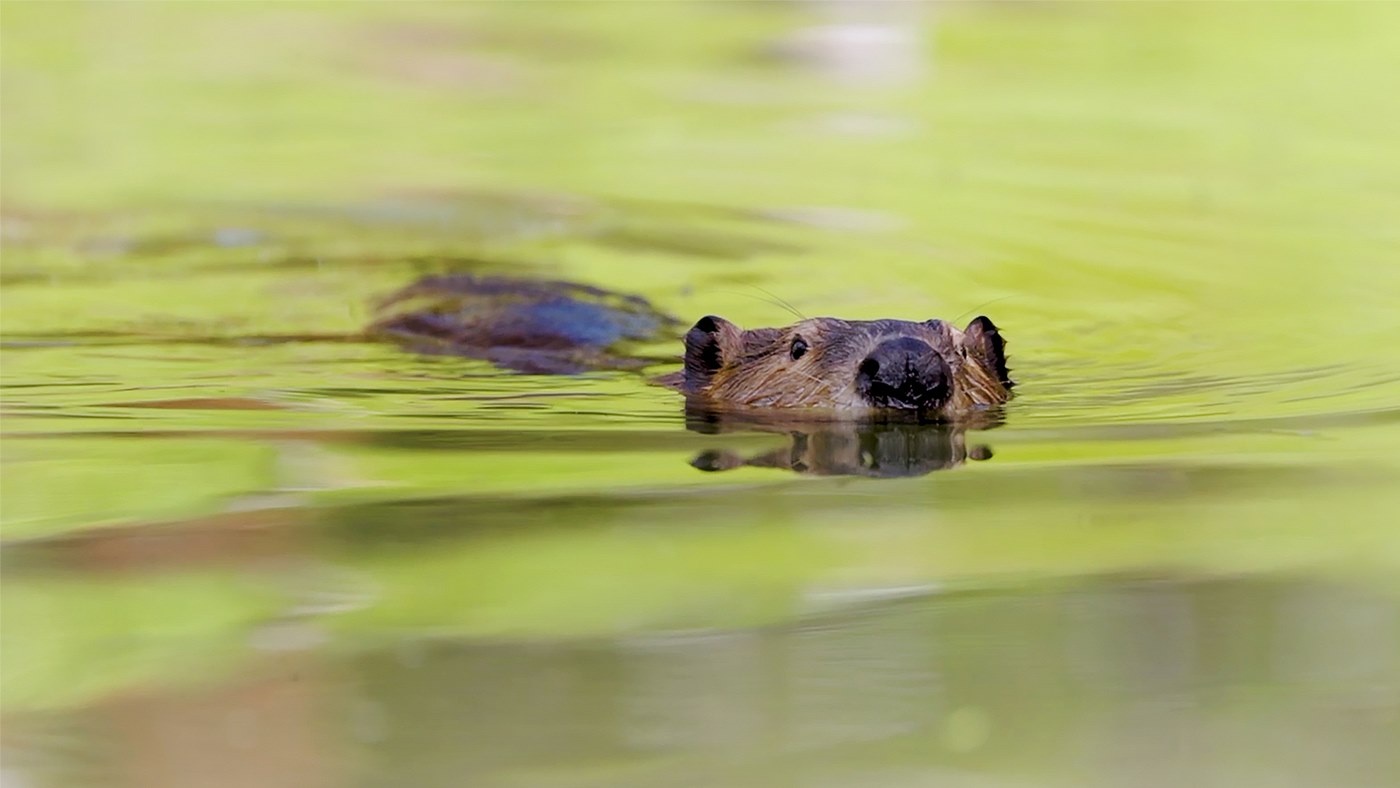begin quote from:
https://www.goodnewsnetwork.org/nasa-became-beaver-believers-after-using-satellites-to-measure-their-impact-on-us-rivers/

NASA often brags about how innovation for space travel and exploration has provided the public with all sorts of downstream benefits, but they don’t typically mean that literally.
Now however, NASA is teaming up with ranchers in Idaho to monitor beaver rewilding projects on small rivers, streams, and other watersheds by adding remote sensing data to a suite of tools used to monitor beaver activities, track dam location and water dispersion, and determine ideal beaver reintroduction sites.
The project started when scientists Jodi Brandt and Nick Kolarik heard about “beaver fever.” Ranchers were beginning to actively restore beaver populations onto their land in states like Idaho and Utah.
Brandt, a human-environment researcher at the Univ of Idaho, Boise, leads a team using NASA’s Earth observation data to help quantify beavers’ impact on local ecosystems, funded by NASA Applied Sciences’ Ecological Conservation program. She works with Wally Macfarlane and Joe Wheaton, both at Utah State University, who developed the Beaver Restoration Assessment Tool (BRAT).
NASA’s fleet of Earth-observing missions like Landsat and Sentinel, collects data across large areas of the world, often season by season. The data can be looked at either in real-time, or rewound to see how things were weeks, months, even years into the past.
The story doesn’t begin with NASA or Idaho ranchers, but with the haberdashery and fur-trapping industries of the 19th century. Beaver fur was used to make gentlemen’s hats, among other items like coats and gloves, necessitating more and more beaver pelts from the New World.
They were extirpated from most of the Wild West before long, but they are swiftly returning to waterways in part because landscape managers came to understand how valuable beaver damming can be to ecosystems.
When water is introduced into a prairie ecosystem, either through rain or melt water, it runs downhill into streams which run into creeks and rivers until it reaches the sea or some major lake.
When beavers dam riverways, that water lingers in the environment, enriching bird, plant, insect, and amphibian life along the water. It also replenishes aquafers and keeps the soil, grass, and trees wetter for longer.
MORE NEWS LIKE THIS: NASA Uses Supercomputers and AI to Count Earth’s Trees From Space for the First Time
“Prior to beaver trapping, beaver dams were just about everywhere in the west. So what we’re attempting to do is to bring beaver dam densities back to historic levels where possible,” said Macfarlane.

“In doing so, we’re building important drought resiliency and restoring stream areas. I think there’s a lot of foresight by NASA realizing how these things connect.”
Associate program manager Cindy Schmidt recently joined the team in Idaho to build beaver dam analogs—temporary, human-created structures that help beavers get established in an area. After seeing how the beavers benefited the land, “I became a beaver believer,” Schmidt said.
MORE BEAVER REWILDING: Beavers Saved From Euthanasia Transform and Replenish Rivers in the Utah Desert
“The real value of using satellite data for monitoring is that there are people on the ground working hard and implementing things like increasing water availability, increasing fish and species habitat,” Brandt said. “The more support we can give them, the more broadly these practices can proliferate.”
In total the project has developed 4 different applications using Earth observatory data from NASA and also the European Space Agency, and it’s allowing people, as Brandt mentioned, doing hard manual labor to know exactly where they need to work more, where their work is having the best effect, and where it isn’t.
WATCH a video below from NASA…
SEE If Your Friends Can Catch Beaver Fever With Your Cool Story…

No comments:
Post a Comment